100 Stories
Okonomi Village: Hiroshima’s Gourmet Scene Has Layers
Over the course of years living in Japan, I have had the pleasure of receiving guests from all over Japan and abroad in various forms: parents, friends, parents of friends, friends of parents, and even a former high school teacher with his family. When they visit me in Hiroshima specifically, I’m always more than happy to devote an entire day or more to showing them the sites in and around our peaceful city, all the while demonstrating the exact same level of hospitality, resourcefulness, and warmth I received back when I was new here. From the planning phase before they even arrive in Japan to the trips we take together before finally seeing them off, I recommend places to stay, research and arrange transportation for the itinerary, explain places and products, and act as an interpreter. It’s basically the job of an unpaid travel agent or tour guide, but what are friends for? One crucial point to bear in mind when guiding tourists, though, is that sightseeing is only half the battle.
“In the afternoon we’re going to check out the Shukkeien. After that, we can take the bus to Peace Memorial Park. Hopefully, we can tour the museum before it closes, and if we still have time to spare—”
“What’re we going to do about dinner?” my friend interjects.
“Oh yeah, we have to find a place to eat!” I realize.
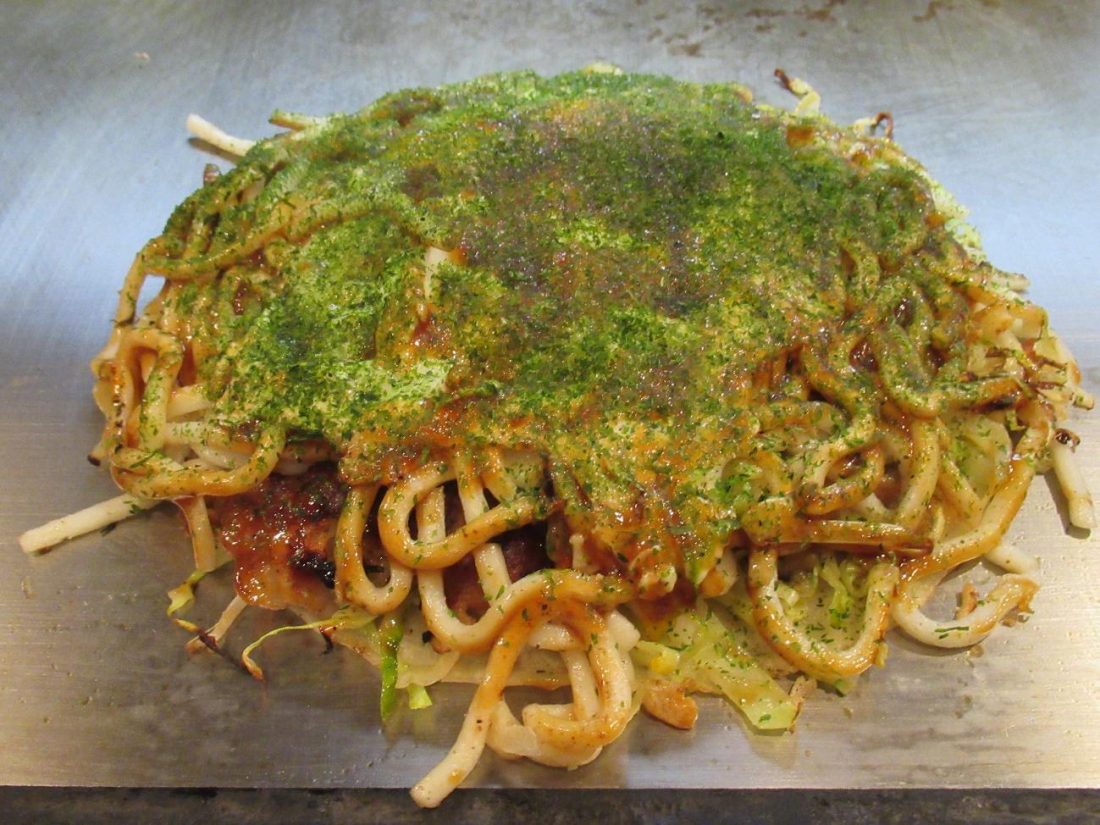
Visitors to Hiroshima will be delighted to know that there is an inexhaustible selection of dining options available, and they will most likely be able to find and enjoy whatever they like. After all, one of Hiroshima’s specialties is “okonomiyaki,” which can be translated as “fried whatever-you-like.” Hiroshima’s version of okonomiyaki specifically has gained culinary fame nationwide and overseas (where it is sometimes called “Japanese pizza”). Naturally, that means that okonomiyaki is the one must-try food domestic and international tourists seek in our city. A countless number of stores may be recommended, and every local is bound to have his or her go-to joint, but visitors who are at a loss for what place to try first should look no further than Okonomi Village!
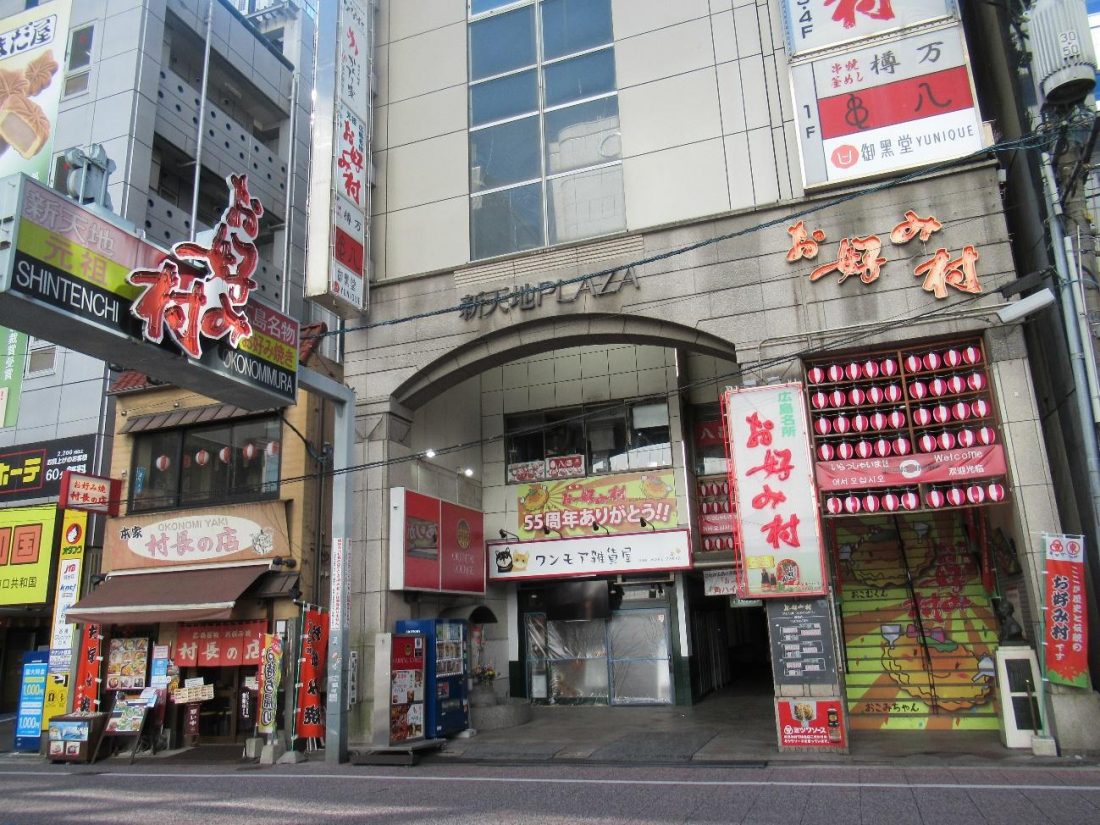
Okonomi Village is situated in the city’s central shopping hub, just southeast of the Parco department store on Hondori. To get downtown, one can either take the bus or the number 1, 2, or 6 streetcar and get off at Hatchobori Station. From there, it’s a short walk down the Kinzagai shopping arcade, passing the Fukuya department store on your left until reaching Parco. Walk through or around Parco to find yourself on the trendy Namiki Street, with the Alice Garden plaza on the left. Hang a left here to find Okonomi Village as well as a plethora of other restaurants, most of which sell okonomiyaki.
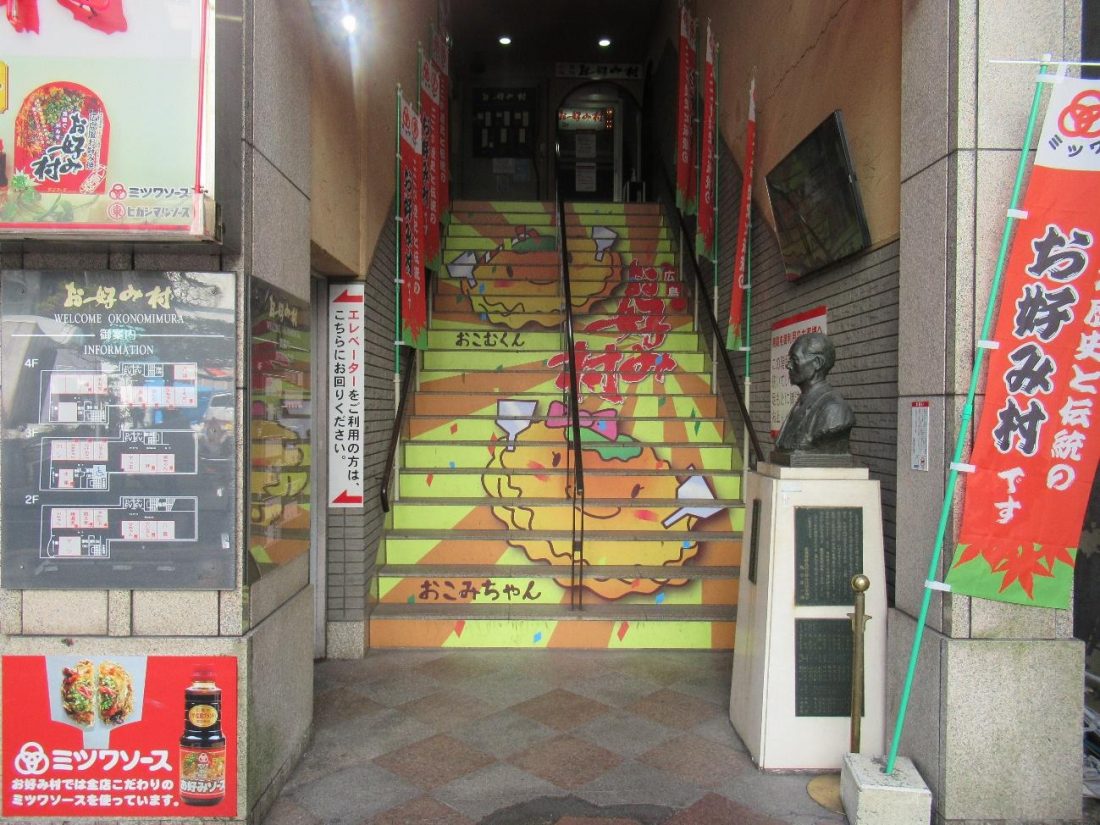
The entrance to Okonomi Village starts with a staircase, decorated with a cute okonomiyaki cartoon character inviting visitors to the culinary paradise awaiting above. Those who cannot climb stairs can use the elevator located down the corridor to the left of the staircase. The village consists of twenty-three okonomiyaki restaurants spread out over the second, third, and fourth floor of the building, with each floor resembling a fragrant flea market of vendors dishing out the same deliciousness in a distinct way. Since I have neither the time in my schedule nor the stomachs in my body to try every single restaurant, my journey today will have me scoping out a restaurant on each floor that stands out. Also, like diving into an okonomiyaki itself, I shall start my gourmet tour at the top of the village and gradually work my way down towards street level.
あとむ (Atom): Particulately Delicious!
As I ascended the staircase to the fourth floor and walked through the doorway into the restaurant hall, I was greeted by a vibrant array of yellow curtains and lanterns before me. This dazzling storefront belongs to Atom, an establishment known for its vast array of teppanyaki dishes that can be enjoyed alongside or instead of okonomiyaki. Since I’ve got an entire day of chowing down ahead of me, I decided to partake in said teppanyaki as an appetizer before trying the okonomiyaki at other restaurants.
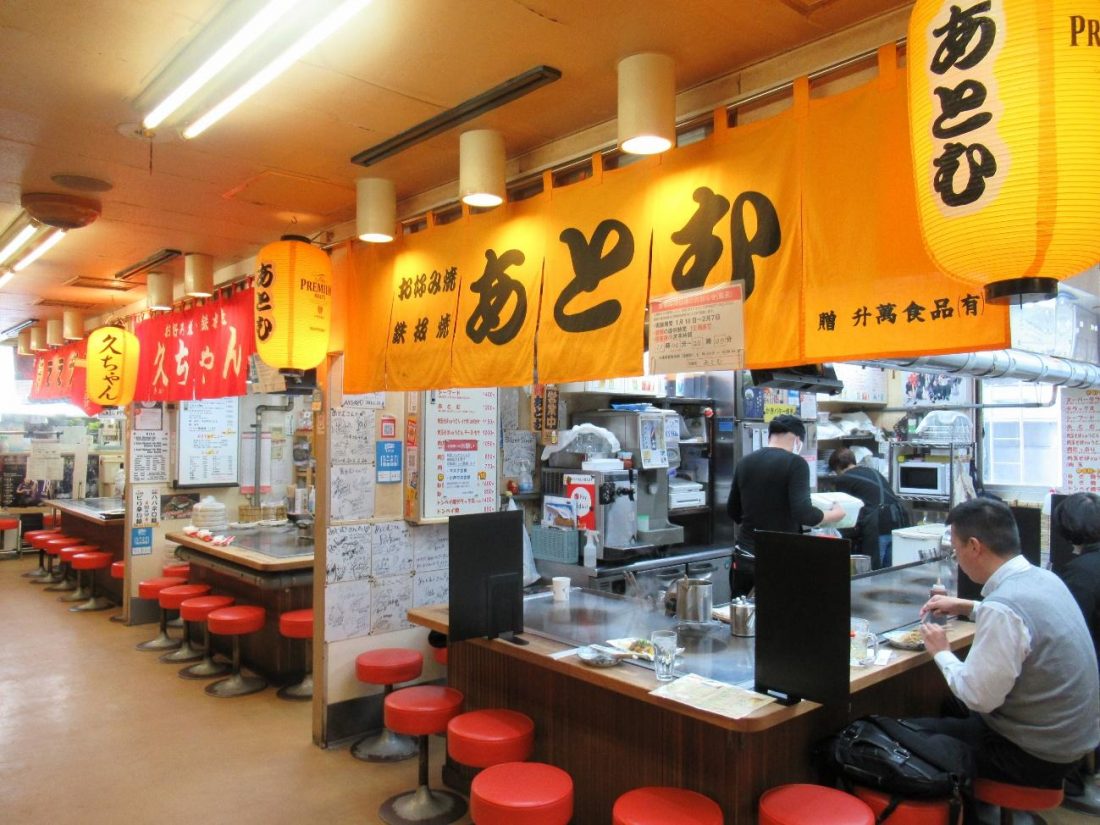
First on my gourmet list were the buttered oysters, a Hiroshima delicacy just as famous as okonomiyaki itself. The menu states that oysters ordered between April and early November are frozen since they’re out of season then, but seeing as I dropped by in the middle of winter, I knew my oysters would be fresh and undeniably scrumptious. The chef prides himself on grilling everything on his hot plate without the use of oil and his deliberate pace to prepare the food just right. All the while I waited, gazing upon the delicious steam particles that were wafting from his workspace, which whetted my appetite and made me ever more eager to chow down.
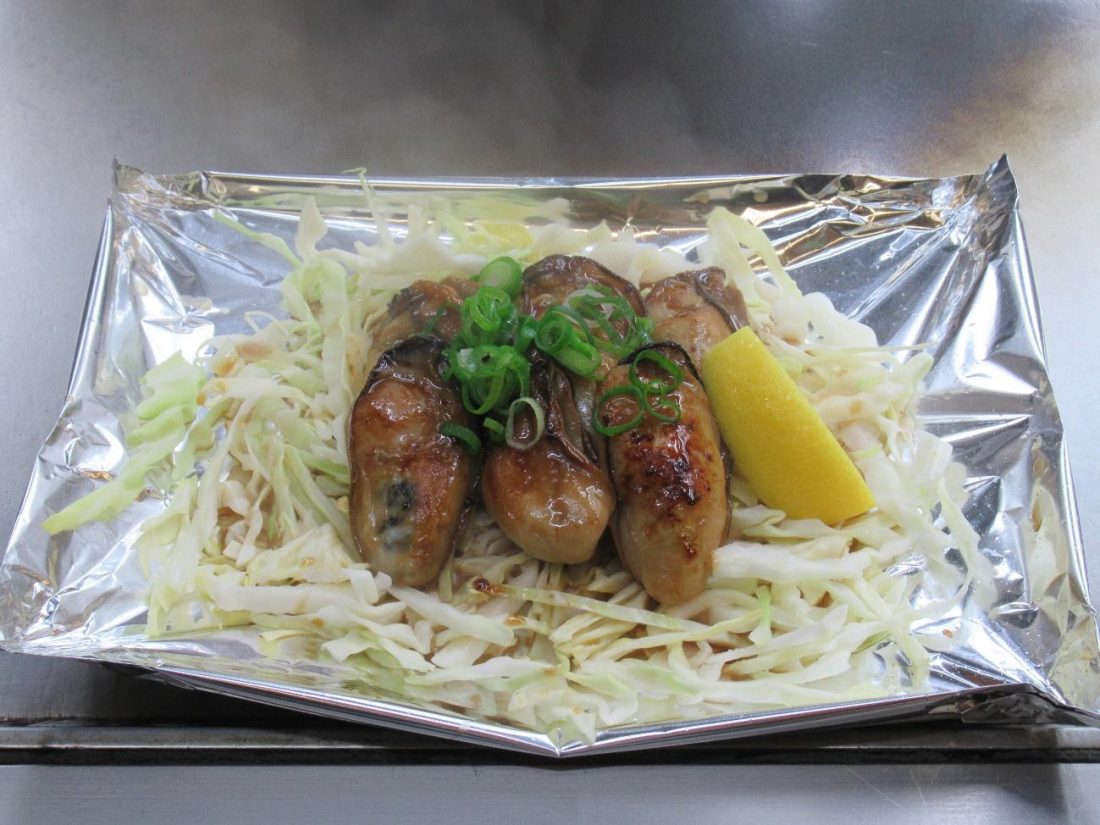
Minutes later, six piping hot oysters on a bed of shredded cabbage, topped with green onion and accompanied with a lemon wedge, were placed on a sheet of aluminum foil and served to me straight on the hot plate. As soon as I drizzled lemon juice on top and dug in, I knew that my wait was worth it and that I had to order more. The butter used in the cooking was browned onto the oysters themselves, resulting in a strong flavor but without a milky aftertaste. The cabbage underneath wasn’t cooked on the griddle, but between the hot oysters and the foil sitting on the hot plate, it was heated to an ideal temperature without getting crispy or soggy from the heat or steam.

Second up was the grilled beef tongue, a dish usually associated with Sendai in Miyagi Prefecture. I’ve been to Sendai twice and had remarkably tender and delectable grilled tongue each time, which set my standard for quality. This has made me slightly wary of having beef tongue outside of Sendai since I’ve been disappointed before by some restaurants in Hiroshima, but thankfully, the tongue I partook in this time met my expectations. It still doesn’t hold a candle to Sendai’s specialty, but the chef used good-quality tongue because no part of it was ever too hard to chew. Like the oysters, this also came on a bed of cabbage with a lemon wedge, but the beef tongue was also served with pepper salt to season the meat while I ate. The tongue and seasoning were a compatible combo, and the firmness of the meat was not unlike other cuts of beef so it wasn’t difficult to forget what part of the bull I was eating.

To top off my teppanyaki tour, I went with something starchy and somewhat unconventional that would hit the spot: cheesy buttered potato wedges. The chef fried the potatoes on the hot plate for a while before placing them in a cast iron dish and adding the cheese, which instantaneously melted and blanketed the potatoes. When I picked up my first wedge with chopsticks, I got some decent mileage out of the stretchiness of the cheese and paused to snap a photo before popping it into my mouth. Potato wedges don’t exactly scream teppanyaki, but I can still recommend it as an accompaniment to meat and seafood for those who don’t have the stomach for a whole okonomiyaki, or for travelers who’ve been in Japan for a while and are starting to miss Western food just a little. After finishing the potato wedges, my hunger started to dissipate, but as I still had okonomiyaki to try, I decided to wrap up here and head downstairs.
一絆 (Ikki): Binding Connoisseurs
I made my way to the third floor for an actual okonomiyaki, and the first store to meet my eyes was Ikki, staffed by a woman with a welcoming smile. Menus lay on the counter awaiting prospective customers, and hand sanitizer liquid dispensers abound to ensure a clean dining experience. The kicker was when I saw they also offer okonomiyaki with a half-size portion of noodles—something my almost-full belly would appreciate—so I sat myself down.
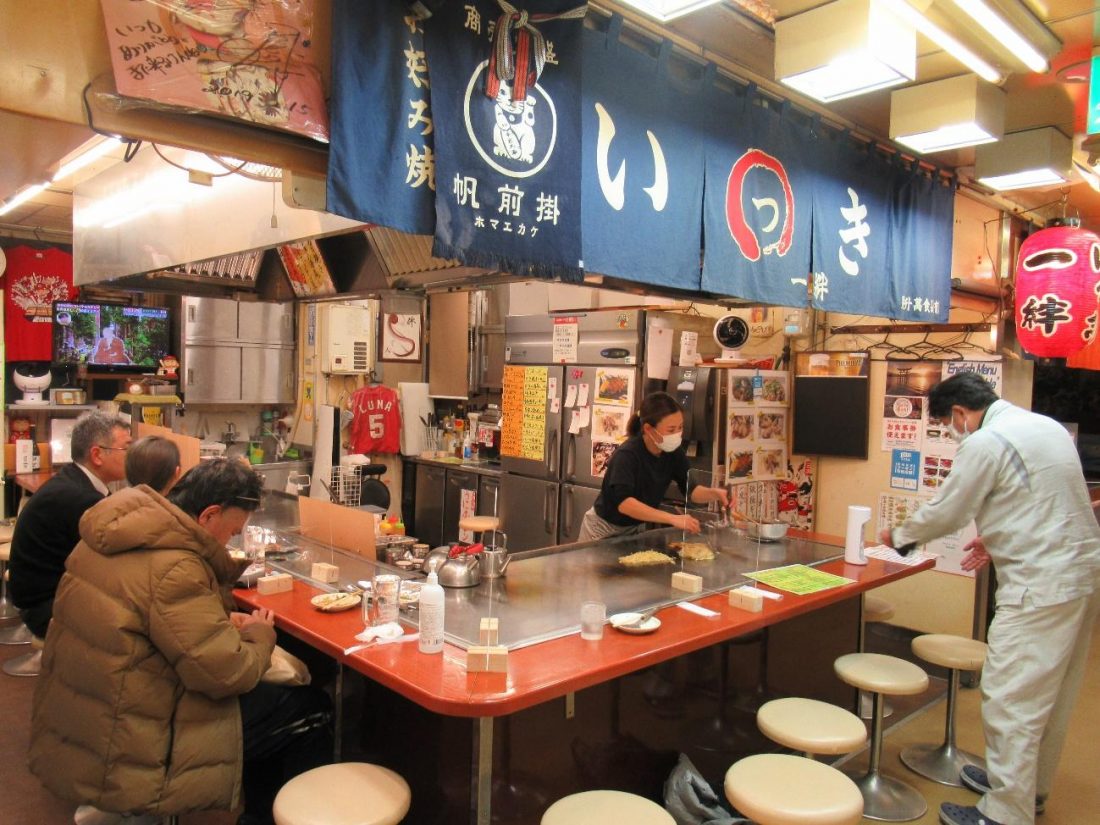
The owner of this restaurant apprenticed at many different restaurants before declaring independence and setting up a shop that binds the best parts of okonomiyaki from different places. Even though okonomiyaki technically doesn’t have a set recipe, after so many years of having it, I start to expect the same ingredients within. When mine was served and I dug in, however, I was taken aback by sesame seeds on top and bean sprouts alongside the cabbage. These ingredients aren’t particularly rare, but including them here is a sign the creator had been around the block before patenting a unique recipe. Some diners prefer tender, melt-in-your-mouth cabbage, and others would rather it have some crunch; this restaurant produces a compromise that is soft yet has that satisfying crisp to it.
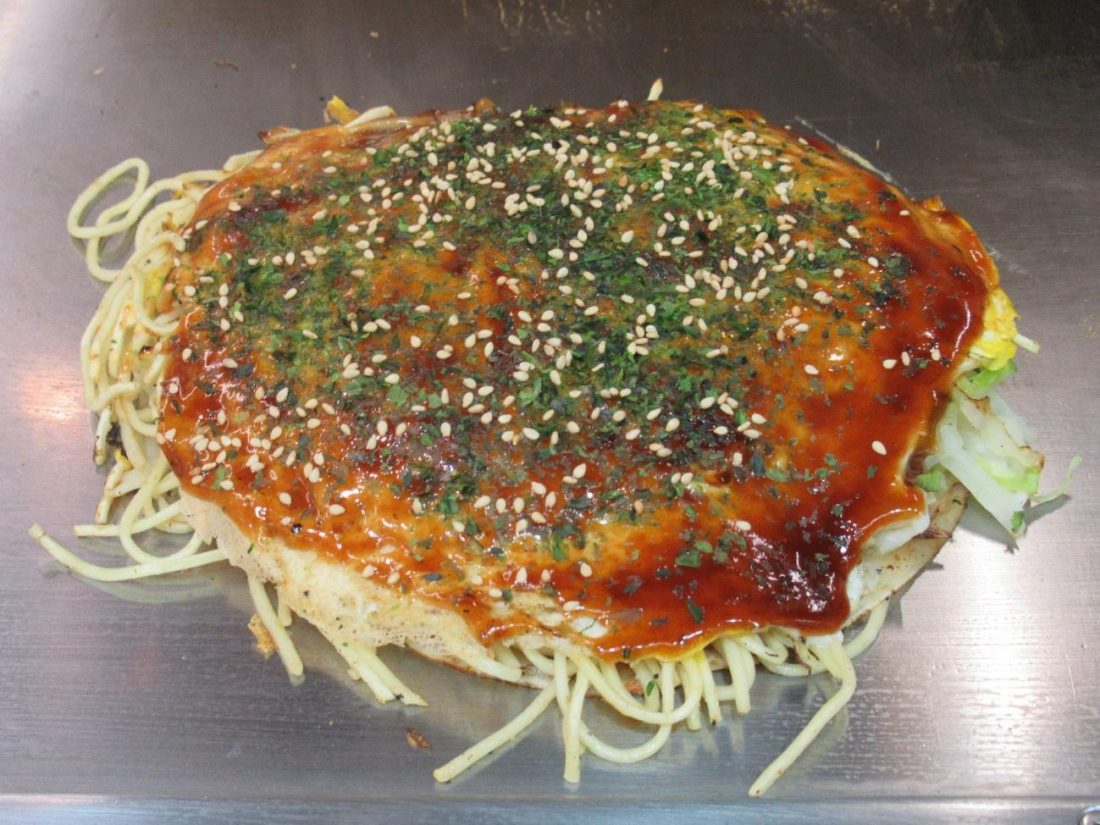
The kanji in this store’s name translates to “one bond,” and I believe that to be the shopkeeper’s primary intention. This restaurant not only binds the styles of countless okonomiyaki chefs, but in its culinary presentation and outstanding customer service, creates a bond between the seller and the customer. The result is a singular link between a melting pot of an okonomiyaki and fans of the dish in all forms, fusing connoisseurs on both sides of the transaction into one enormous, gourmet family.
八昌 (Hassho): Legendary Name and Taste
My last stop in the village lies at the front of the village on the second floor at Hassho, a well-renowned name in the okonomiyaki world with locations all over Hiroshima and beyond. I actually had to hit up this place on a separate day as they tend to close early during dinnertime after they run out of ingredients. A good time to visit would be for lunch after the rush, when the seats were almost completely empty and I could concentrate on the sounds and smells of only my okonomiyaki being made.
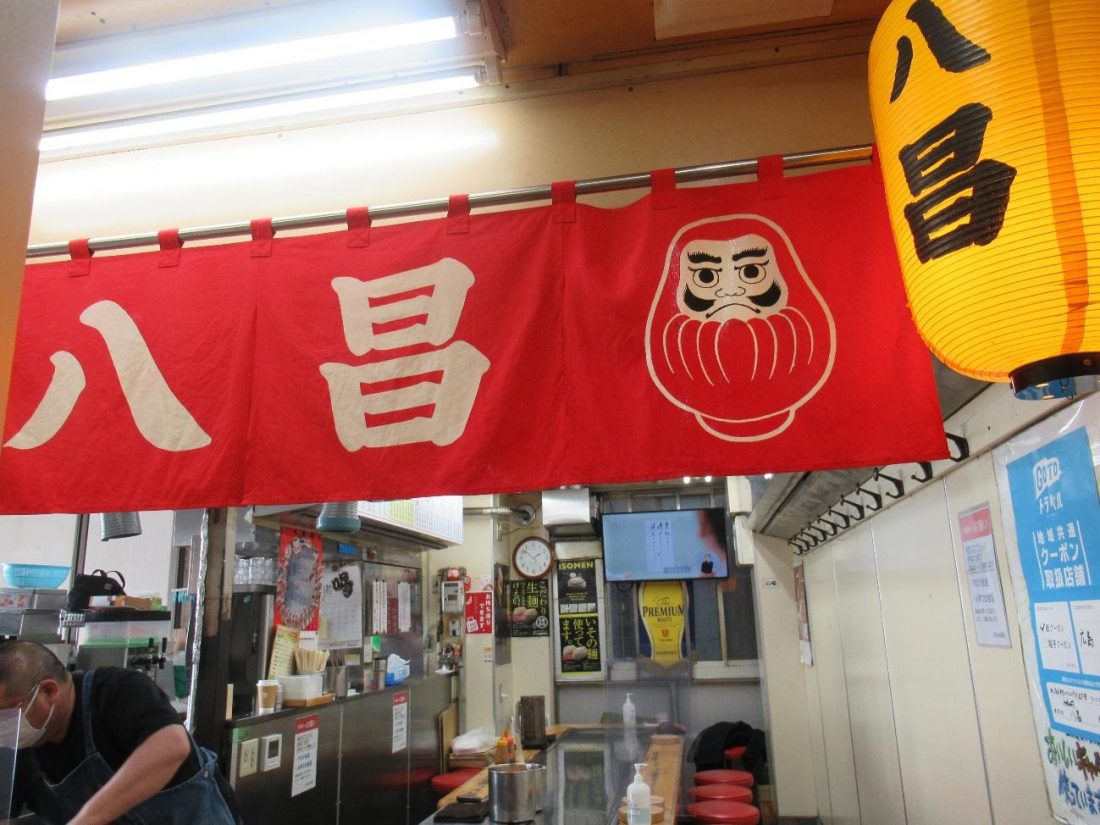 I got their standard fare with soba noodles and added my go-to squid chips as usual. The chef kindly pre-cut my okonomiyaki into sixteen pieces, placed it on a ceramic plate, and provided chopsticks for easier eating. The restaurant proudly advertises the isono soba noodles they used that are freshly made in a dedicated factory and shipped right to the store. This freshness is obvious in the gummy texture and looseness of the soba even after being fried for so long. The egg on top was thoroughly cooked, the pancake on bottom was moist and chewy, and the sliced pork sandwiched in the middle was remarkably crispy and never got damp during the meal.
I got their standard fare with soba noodles and added my go-to squid chips as usual. The chef kindly pre-cut my okonomiyaki into sixteen pieces, placed it on a ceramic plate, and provided chopsticks for easier eating. The restaurant proudly advertises the isono soba noodles they used that are freshly made in a dedicated factory and shipped right to the store. This freshness is obvious in the gummy texture and looseness of the soba even after being fried for so long. The egg on top was thoroughly cooked, the pancake on bottom was moist and chewy, and the sliced pork sandwiched in the middle was remarkably crispy and never got damp during the meal.
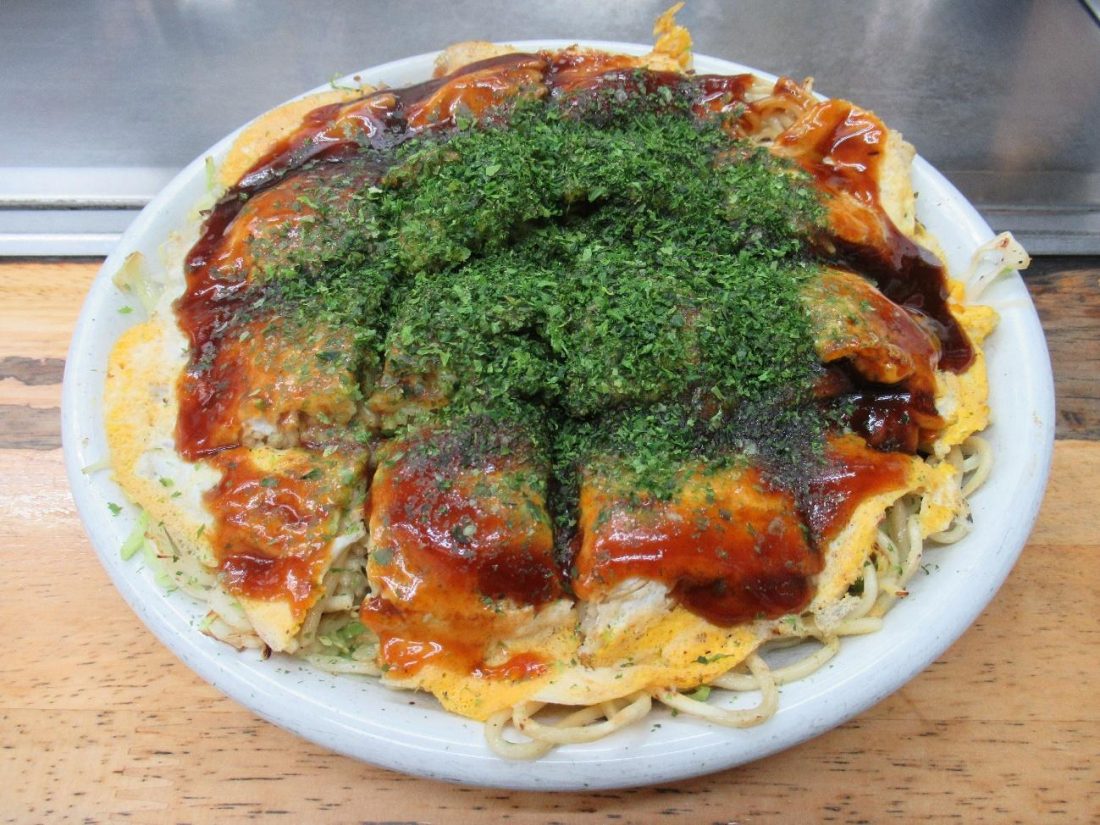
Although I hold this place in high esteem and wish not to burst everyone’s bubble, there is one fact of utmost importance that must be stated. THIS IS NOT A TRUE HASSHO, and to understand why I’ll need to lay down some okonomi history surrounding the Hassho legacy. The Hassho lineage originates in Okonomi Village but actually ends in a slew of places all over the city and nationwide.
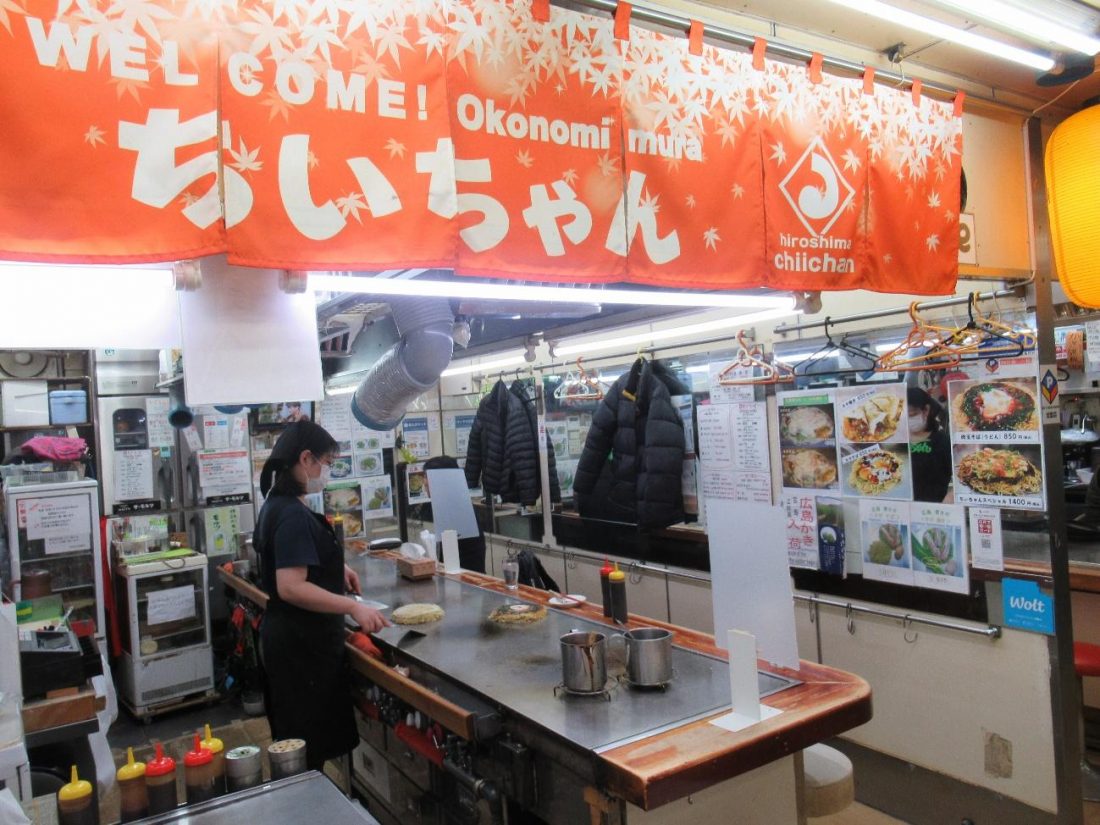
Our story begins with a man named Shozaburo Furuta, who gave rise to a family of okonomiyaki craftspeople. His restaurant, ちいちゃん(Chii-chan), remains in business to this day on the second floor of the village and has since been taken over by his second son, but his eldest son Takanori opened the pioneer Hassho store in the village before one day moving his store to another location in Takeya-cho. Takanori Furuta changed his store’s name to 元祖八昌 (Ganso Hassho), which means “progenitor Hassho,” but due to its famous red store curtain it is sometimes referred to as “Red Hassho” for distinction, which I will clarify momentarily. Anyhow, when that restaurant was uprooted, an empty space with the same red curtain remained, store name and all. The new tenant now occupying that space where I ate had permission to continue using the Hassho name despite having no ties to the Hassho lineage, and his restaurant is sometimes disparagingly referred to as “False Hassho” for distinction. However, despite being unrelated to the legend, the delectability of Okonomi Village’s Hassho remains a truth and this place deserves to be appreciated as a gourmet location in its own right.
Moment of Joy: Powerful Critic
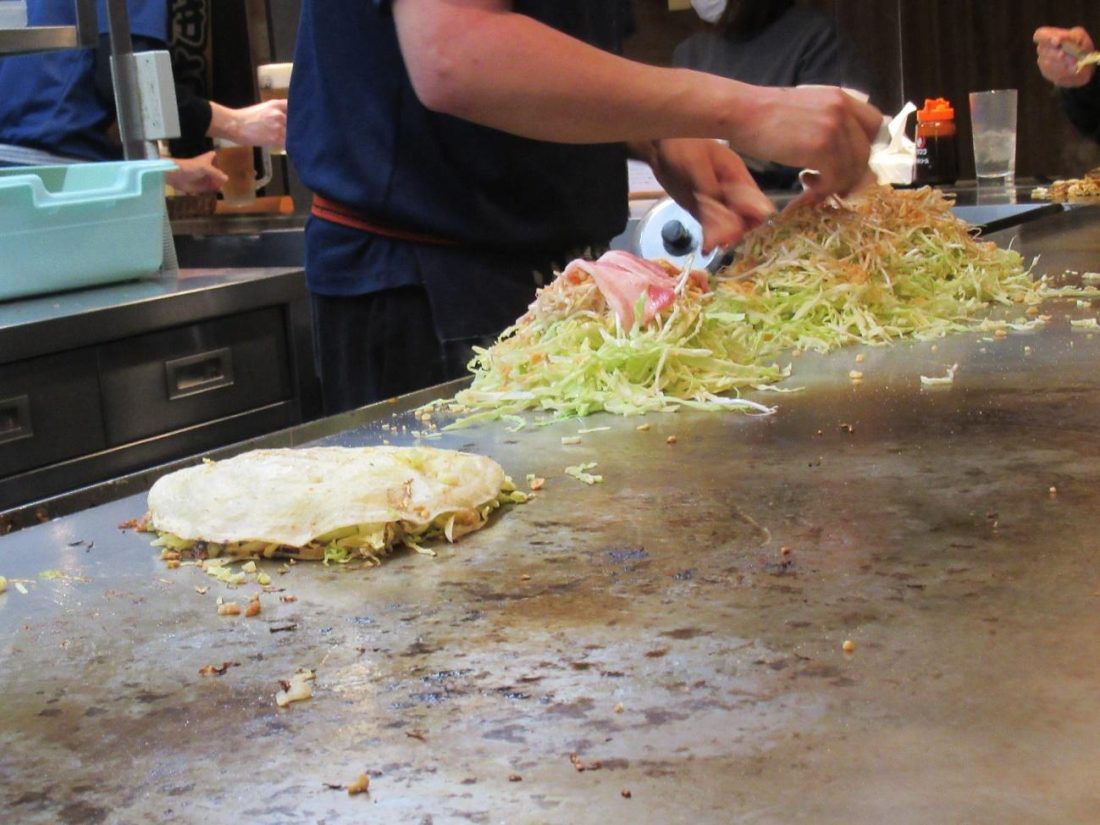
Wherever I went to eat okonomiyaki or teppanyaki, I tried not to blow my cover saying that I was writing an article about okonomiyaki restaurants so I would receive unbiased treatment as a customer. Be that as it may, when I asked permission to photograph the store front and cooking process, the staff couldn’t help but wonder for what purpose I wanted to take pictures and record video of something they considered so mundane. It couldn’t be helped, so I filled them in on my situation, attempting to wait until after my food had been prepared. In any case, the store managers were always delighted to find out I was helping them with their PR, especially on an international scale. They would also chat me up after finding out I’m actually not Japanese (it takes the locals a while to realize this), and every time I felt tremendously ecstatic about having both the position of power of a food critic as well as the honor of becoming more involved and connected with Hiroshima’s okonomiyaki scene.
Chase the Taste
There are so many more places to try within Okonomi Village itself, such as たけのこ(Takenoko), run by Shozaburo Furuta’s eldest daughter. If you wish to explore beyond the village, you can start with the places nearby. Besides the standalone joints at street level, there’s also an “Okonomi Republic” two doors down, which functions like the village on a smaller scale. My go-to locale いちなり (Ichinari) is on the third floor of the republic and is chosen by some travel companies as the starting point for Hiroshima food tours.
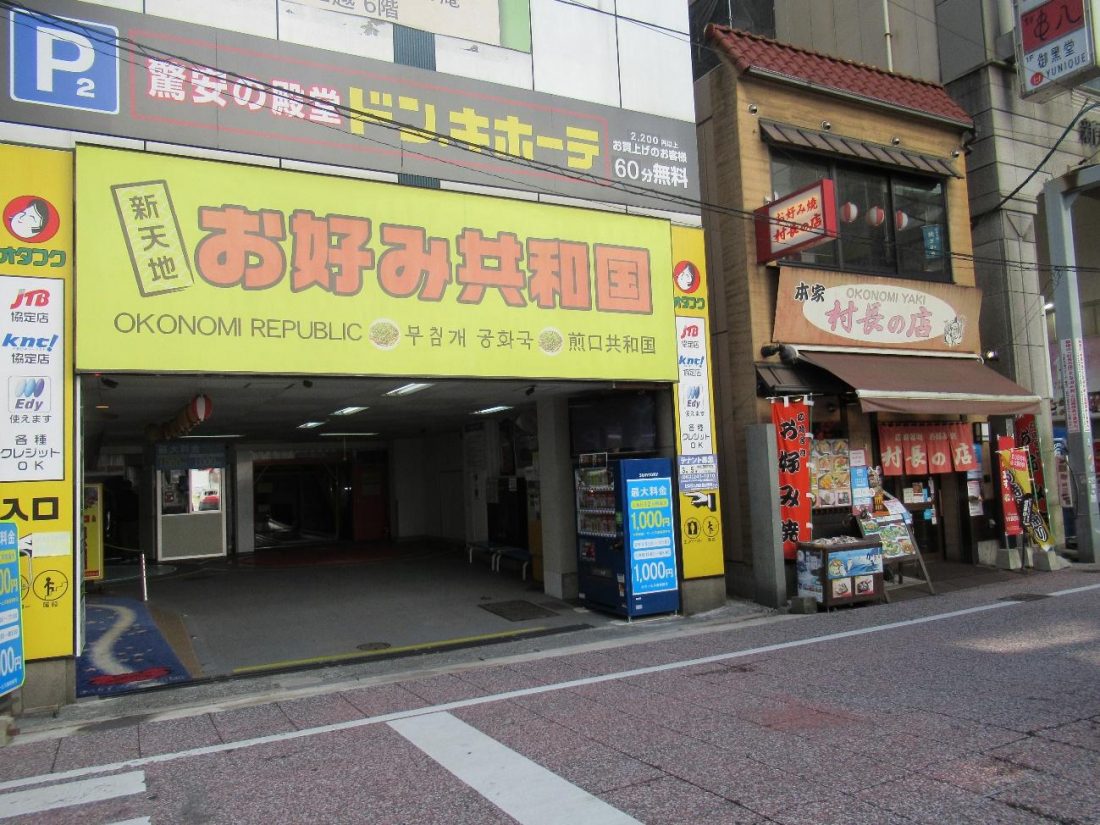
You could also dabble in the Hassho legacy by dining at a “True Hassho” in the area. The Hassho lineage continues not from Takanori Furuta’s progeny, but rather an ex-employee. A cook by the name of Hiroki Ogawa, who apprenticed under Mr. Furuta at the progenitor Hassho, went on to open his own restaurants in Yagenbori, Itsukaichi, and Kaneyama-cho. Mr. Ogawa continues to use the Hassho name and cooks his okonomiyaki the same way, but his stores have a blue curtain instead, and are thus called “Blue Hassho” for distinction. Various cooks-in-training who apprenticed in Mr. Ogawa’s stores later went on to found their own restaurants—either under the same or a different name—and make up the second generation of “Blue Hassho” restaurants. Cooks who apprenticed in those successor restaurants and set up their own continue the lineage as the third generation of “Blue Hassho,” and so on and so forth.

Whatever place you choose, there is no wrong choice when it comes to okonomiyaki in Hiroshima. Since the restaurants in and around Okonomi Village are basically tourist attractions themselves, the workers are accustomed to foreigners and can accommodate certain dietary preferences in addition to providing multilingual instructions on how to order and eat okonomiyaki. Experiment with whatever you like in or on your okonomiyaki at a multitude of restaurants, and in due time, you too may pick out a regular joint that you’ll visit on future trips to Hiroshima.
(Movie)
Like a Hiroshima-style okonomiyaki, a vacation also comes in layers, and eating and resting are two crucial strata that are not to be overlooked. With this in mind, I make an effort to include excellent dining options in my guests’ itineraries to complete their Japan experience and make Hiroshima one of the best memories of their trip. It’s for this sake that I incessantly explore my own city with the naïveté of a tourist, ever expanding my dining database and connection with Hiroshima’s stratified gourmet scene.
“What’s good around here?” my friend inquires as we wander aimlessly downtown.
“What’re you hankering for?” I ask back in an attempt to glean preferences.
“Nothing in particular.”
“Follow me, then. I know just the place for us!” I exclaim as I dash ahead.
“Wait up! What’re we having?”
I stop and turn around with a smirk, “Whatever you like.”




